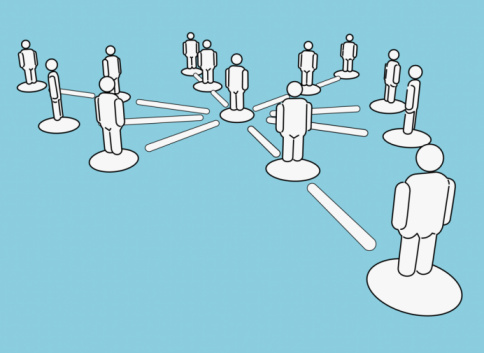The online shopper is extremely savvy and has myriads of options available to them for different products and services. They often move from site to site to compare prices, shipping costs and product features.
Multi-Channel refers to the delivery of products and services via multiple channels. This multi-channel buying behavior has resulted in the increased popularity and business for online shopping destinations such as eBay, Amazon, and comparison-shopping portals. These sites have become the first point of entry for millions of online shoppers. This trend has also resulted in increased pressure on retailers to have a presence across spectrum of channels. Enterprises must overcome obstacles that diminish the customer’s experience which includes:
- Multiple customer touch-points
- Inconsistent information
- Inconsistent transaction capabilities
- Inconsistent service levels
- Complex Integrations
Multi- Channel Enterprises: The Phenomenon
At the heart of the phenomenon, is the rise of the extremely savvy shopper, a consumer whose experience is characterized by connectivity and multiple touch points rather than interaction within single retail channels. This new shopper is spending more time online than in front of the television and is increasingly comfortable with browsing websites for insights into products and services, independent of the retailer’s own website.
Retailers once contend with a bare minimum presence had to begin thinking about multichannel strategy and implement the logical steps to establish an e-commerce footprint. This would in turn align the inventory, manage merchandising, shipping and fulfillment within separate channels. However, many retailers did not anticipate that shoppers were already one step ahead, adopting technology in a way that would change the paradigm for traditional retail.
Multi-channel capabilities typically include the following channels based on the requirements and objectives of the targeted organization.
- CTI/IVR (Mobile and Landlines)
- Internet
- Call Centre’s
- Branches
- e-Mail/SMS
- Kiosks
Multi Channel Enterprises – Factors Driving the Change
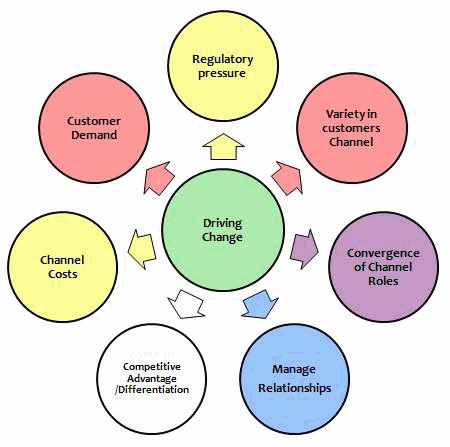
Figure 1: Factors Driving the Change
Factors causing companies to focus on multichannel strategies are as follows:
Customer Demand:
Increased customer expectations translate to a demand for 24/7 high-speed access and choice in how they interact with a company. Customers often have strong preferences for using a specific channel for particular kinds of interaction, for example, they may use the in-store channel to commit to a buying decision, while using the more convenient online channel for exploring options.
Channel Costs:
Maintaining channels (including marketing, advertising and managing the channels themselves) can typically account for around 40 per cent of a company’s costs. The potential sharing and reuse of people, process and technology that can be achieved through an integrated channel strategy which can help improve an organization’s channel cost structure.
Strategic Competitive advantage and differentiation:
Products can be copied within days. Pricing can be undercut within minutes. Apart from branding, multichannel management is one of the few customer-facing differentiators that can deliver true sustainable competitive advantage
Managing Relationships:
To ensure customers do not end up being made to feel like cattle being herded around customer relationship management should ensure that experience is not impacted and it’s seamless across all the channels.
Convergence of Channel roles:
Traditionally, channels were usually silos with most, if not all, of the functions required in the customer-buying cycle being fulfilled through one channel. In many companies, several channels are used during each customer-buying cycle and need to be designed, maintained and measured appropriately.
Increased variety in Customers’ Channel Use Patterns:
Research has shown that multichannel shoppers in the financial services and retail sectors represent an increasingly large proportion of the buying population. Providing the target high-value multichannel customer segment with increased convenience through integrated channel management therefore encourages customer lock-in and brand loyalty.
Regulatory Pressure:
In some sectors (e.g. financial services, public sector) government has a strong interest in the cost-effectiveness and quality of channels used, particularly where high channel costs leading to poor customer experience.
Multi Channel Enterprises – Business Landscape
Many Enterprises already have a good idea of what they would like to do in the current digital era. They know it’s important to be able to serve the customers effectively and efficiently across all channels. Enterprises face several technological and strategic challenges, like excessive reliance on legacy systems. In order to offer attractive online products and services, most enterprises constantly apply a patchwork of bandages to their legacy systems and make changes on the back end applications, which is time-consuming, expensive and risks.
This section describes the components/systems that make up the multi channel enterprises. The focus is to emphasize on multi channel components in the business landscape. The glue to this is in essence the framework/solution that ties the channels together with the business applications and the enterprise data services. The below sections describes the purpose of each layers depicted in the diagram.
This consists of various capabilities that includes CTI/IVR, Internet, Call Centre’s, Branches and SMS Gateways and form part of extended enterprise through which customers and employees access business functionality.
Channel Frameworks
This typically consists of frameworks/gateways/solutions to interconnect channels to the business functions/applications. The channels are predominately accessed by customer and employees but in some cases there is also a need for vendors and partners to access certain part of the business functions. Plese refer to section on Technology Vendors for further information.
These are typically the intermediate services Layer and represent Shared Business Process Services. This may consist of business activity monitoring component like the BAM.
This consists of integration infrastructure components like service bus, adapter’s service gateway for partner integration, service registry, service repository and BPEL processor. Service bus carries the service invocation payloads/messages between consumers and providers.
Implements business processes for an enterprise or vertical industry. These are specific to the enterprise or vertical industry. The internal structure of business applications relates closely to the specific requirements selected by an organization. This layer consists of business applications like CRM, ERP, custom built applications, COTS based applications, mainframe applications and unstructured data use to support day to day business operations.
This consists of structured and unstructured database. Tables define the physical storage of data in a database, and stored procedures and views allow you to manipulate data as it goes in and out of those tables. Unstructured data will be generally in the form of flat files or XML files. Data Access Layer DAL helps separate data-access logic from your business objects.
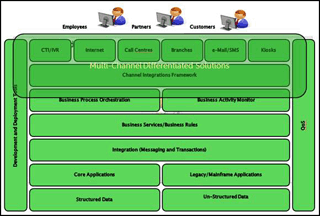
Figure 2: Multi Channel Enterprises – Business Landscape
Multi Channel – Transformation Strategy
A multi-channel strategy provides a 360-degree view of the customer, creates consistent customer experience, and leverage business rules and processes across all channels. This results into building good customer relationship and meeting business objectives. A top-down and bottom-up approach are used to implement the multi-channel strategy. The combination of these approaches is the recommended way forward for a fool proof approach.
The top-down approach focuses on interviewing stakeholders to evaluate the maturity of each of the dimensions that includes: the mobile channel, the social channel and various aspects of the digital channel (content management system, user experience, business intelligence and Web analytics, and architecture and search).
The bottom-up approach relies on deriving analytics-focused business insights from structured and unstructured data. Analytics-focused business insights provide direction on how to drive the implementation strategy to meet business objectives. These insights can be derived from both structured data (data stored in a structured format such as Web logs or databases) and unstructured data (data collected via comments, reviews and the social channel). Following the correct processes, right tools and infrastructure in place, this data can be analyzed to draw business insights and to provide real-time predictive analysis.
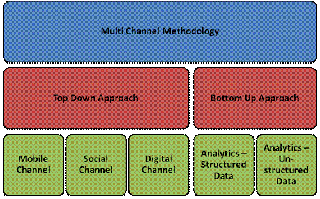
Figure 3: Multi Channel Enterprises – Transformation Approach
Multi Channel Enterprises – Maturity Model
In an organization different channels could be at different levels of maturity. However, they all play a critical role in holistically implementing the multichannel strategy.
A maturity model should be created for each of the dimensions depicted below to clearly evaluate an organization’s current and desired maturity level for that dimension.
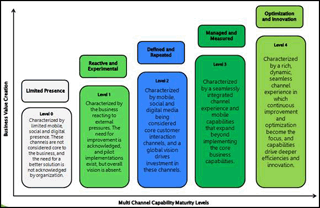
Figure 4: Multi Channel Enterprises – Maturity Model
Gap Analysis
Analyzing an organizations current and future maturity level is the first step toward performing a gap analysis, which identifies the capabilities that are required to close the gap between current and desired maturity levels. These capabilities are then measured against a prioritization matrix across several dimensions, such as risk, effort, implementation complexity and business impact.
Road-Map
Areas of interest specified on the prioritization matrix serve as input to create an actionable road map that shows project dependencies and estimated time frames for long and short-term projects with a focus on incrementally deploying capabilities in the organization.
Technology Vendors – Multi – Channel Framework
The Multi Channel frameworks and solution are designed to help enterprises achieve
- Effective channel management and integration
- Services-centric and customer-centric retail delivery
- Reduced IT infrastructure costs
- Improved customer experience and retention
- Operational risk management across channels
Gartner Magic Quadrant 2010 – Web Customer Services
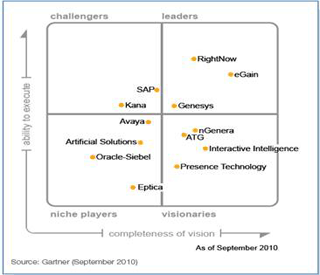
Figure 5: Magic Quadrant – Web Customer Service (Gartner Incs)
There are many niche vendors providing solutions for web customer services – WCS channels. Looking at the buying trends of past 12 months, it has been observed that more than 80 % of product buyer preferred a more comprehensive suite as opposed to stand alone or point based solution that requires extensive cross channel integration. The magic quadrant is based on the following components:
- Knowledge based for self service
- E-mail response management
- Web Chat
- Collaborative browsing
- Virtual Assistance
- Short Message Services and Multi-Model Communications
Each Industry and each business or organization has its own unique customer service processes and services channels making it unlikely that a single vendor will dominate any given industry. Organization must therefore be selective in choosing a WCS vendor because the biggest investment is often in building out the knowledge base for self service. This knowledge base is re-used across multiple channels and is extremely difficult to port across different products.
Multi Channel Enterprises – Best Practices
Consumers are now very much empowered by technology. They can choose where to buy, and who to buy from, with tremendous ease. As such it has never been easier to lose a customer. Your competitors are never more than couple of clicks away.
Quite simply it is no longer enough to just be aware of your customer. You need to understand them and to accommodate their needs and behavior. Make it easy for consumers to find and interact with your brand (online, offline, kiosks, stores, mobile, catalogues, telephone…)
Nowadays consumers demand a good experience, and they won’t tolerate a bad one. As such you must deliver a fantastic experience across all touch points, seamlessly.
Recommendations for Multi-Channel Integration:
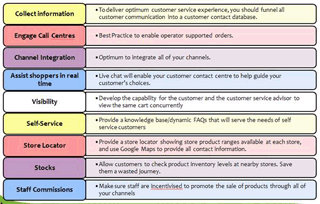
Figure 6: Multi Channel Enterprises – Best Practices
Multi Channel Enterprises – Journey to Excellence
The journey to excellence in multichannel has three major stages.
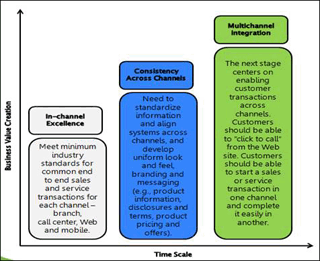
Figure 7: Multi Channel Enterprises – Journey to Excellence
Benefits of Multi Channel Enterprises
Benefits gained from implementing a multi-channel strategy:
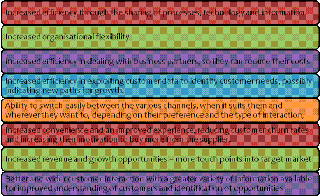
Figure 8: Multi Channel Enterprises – Benefits
Conclusion
Each retailer has focused on different aspects of the multichannel experience. In addition, the company should provides a single customer service phone number for issues across all channels, and call center reps should have detailed information about each customer’s activity in other channels. Even retailers at the leading edge of the multichannel customer experience acknowledge that they have a long way to go. Customers are becoming more demanding and expect a consistent experience across all channels for both sales and service transactions. Given that it can take years to develop a differentiated multichannel strategy, firms need to invest in new technologies and incorporate the multichannel experience in their core value proposition.
Acknowledgements
We would like to thank Wipro Consulting Services – Enterprise Architecture Practice Leadership for giving us the opportunity to work in this area and for providing us guidance and valuable inputs.
Authors
Sameer Paradkar is an Enterprise Architect with Wipro Consulting Services. Sameer is a technology evangelist with 15+ years of extensive experience in the IT industry that spans across Consulting, SI, Product Development, R & D and Delivery Organizations/Service Lines. A vivacious self starter Sameer has abilities to approach things pragmatically with a zeal for results. I have proven expertise in EA and SA with special interest in IT Strategy and focus on QoS. Sameer can be reached at sameer.paradkar@wipro.com.
Shyam Dixit is an experienced Enterprise Architect in Banking and Telecom Domains with Wipro Consulting Services. Shyam is TOGAF-9 & MSP Certified and has got 13+ years of experience in Enterprise Architecture, Solution Architecture, Business Processes Re-engineering, Enterprise Strategy Planning, System Architecture and Development in Finance & Telecom Industry. Shyam can be reached at shyam.dixit@wipro.com
Imran Arfi is Manager Enterprise Architecture Consulting at Wipro Consulting Services. Imran has an excellent mix of enterprise architecture, solution architecture and software engineering skills. Imran has expertise in various domains including banking, insurance, retail, telecommunication and media. Imran has led large scale IT transformation programmes, defining and delivering outsourced architecture/design services of multichannel platform in globally distributed environments. Imran has ability to evaluate, adopt and mentor development teams the on right software engineering processes and methodologies like agile, extreme programming, test driven development, continuous integration and auto deployments, design patterns, software modelling types and tools. Imran can be reached at imran.arfi@wipro.com
Prashant Singh is a Manager e-Commerce at Wipro Consulting Services. Prashant is Performance driven IT professional specializing in J2EE enterprise solutions. Prashant has worked with Fortune 50 firms developing J2EE based web and BI solutions for varied domains. Prashant can be reached at prashant.yadav2@wipro.com
Disclaimer
The views expressed in this article / presentations are those of the authors Wipro does not subscribe to the substance, veracity or truthfulness of the said opinion’.
